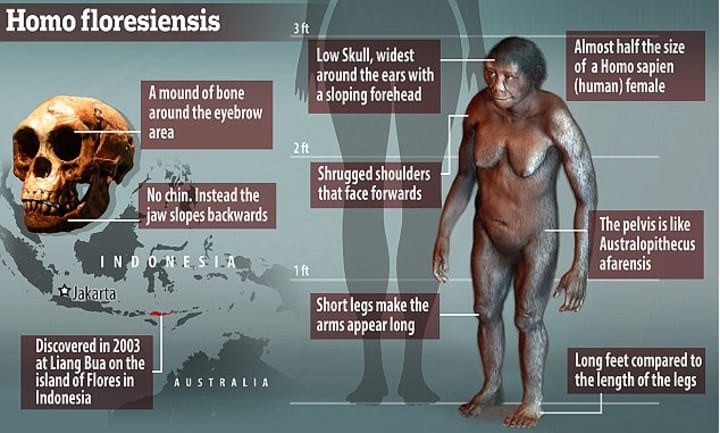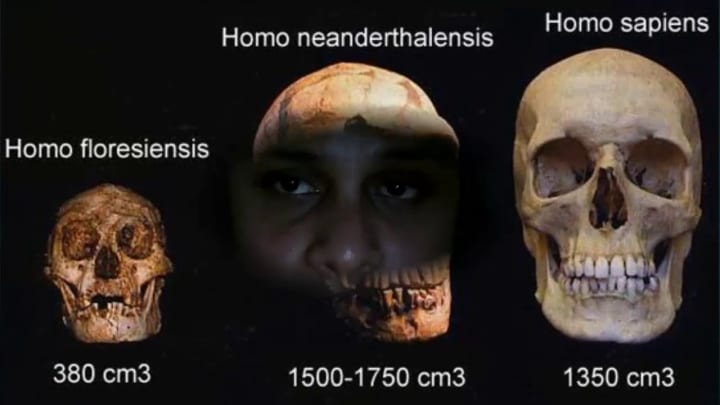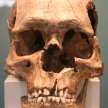The Real Hobbit
The Indomitable Homo Floresiensis

If there ever was a species that rocked the scientific world, it was Homofloresiensis. It was so tiny, so small brained, so out of time and place. Found on the Island of Flores in Indonesia in 2003. How did it get there? It had to be by boat of some kind. How does it fit in our family tree? That is something no one has been able to figure out yet. It was the WTF reaction by researchers as well as its diminutive size that complicated its acceptance into the species Homo. The keyboarding went quantum. It was a pathological anomaly. It had this disease or that syndrome. You name the disorder, floresiensis had it. The most common choice was Down's Syndrome, which is very rare among primates. Only two known cases have ever been found. When more bones and tools were found, we were asked to imagine a tribe of Down's Syndrome dwarfed hominins sailing off to Flores and establishing themselves as hunters. Really.
Island of Flores in Indonesia

The next thought was that they had to be a dwarf of something else. They had to be Homo erectus! They had made it through the many islands here before. The dwarfing, scientists said, was the result of island dwarfing. This is a phenomenon that can occur on islands where certain situations come together to make large animals small, and small ones large. When food is limited, big animals get small. In the absence of predators, small animals can get big. On Flores, the elephants dwarfed and the reptiles grew large. Herein lies the rub. Try as hard as they could, scientists could not squeeze those bones into an erectus.
The Bones of Contention

It may be that the Hobbit was already miniature when it arrived in Flores. The enigmatic Negritos of the Andaman Islands are diminutive, and a mysterious set of very small skulls in India, point to possibilities of a tiny group of intrepid explorers who might have made it to Indonesia.
Skull Comparisons

The scientific heavies brought Bayesian Analysis to the picture. This is based on a type of analysis invented by Thomas Bayes. He was mathematician and clergyman of 18th century England. This method quantifies situations with uncertain outcomes by determining its probability. What this boils down to is that scientists took the mandibles, skulls, teeth, and postcranial bones of Australopithecus and several types of Homo and ran their measurements through a computer using Bayesian Analysis. The outcome was ground-shaking. Homo floresiensis was undoubtedly African in origin and most closely related to Homo habilis. The implications were mind-bending. The location of such a primitive Homo so far from Africa was heresy in an Anthropological world where an archaic such as habilis could cross water and travel so far. The theories included such things as they were whipped there by a tsunami, or a typhoon swept them there on reed mats. No one gives credence to the possibility that they could have built an intentional device to travel water. It would be good to point out that habilis is also controversial on their own. Many think they should be classified as the earlier Australopithecus.
This brings us to another conundrum. The tools they have found date back a million years! So here you have it. A mighty but tiny very ancient group of people left Africa a million years ago, traveled 9,000 miles to Indonesia on reed mats blown by the wind of a typhoon, to thrive in isolation for a million years. There is something so wrong with this picture. Clarity will come, but anthropology is not known for quick answers. The distance seems too great for reed mats, the being too primitive, and the isolation genetically claustrophobic for a million year success.
It is strange that we have been so taken by stories of little people from Lilliputians to leprechauns. They exist in our literature, and in every culture. Homo floresiensis was a tiny, formidable adventurer who survived much longer than we have. Whatever his story turns out to be, no one can take that away.
About the Creator
Monica Bennett
I am a retired high school and college teacher. I have taught forensics, biology, chemistry, ecology, and Earth science.. Long Island has been my home for 60 years.






Comments
There are no comments for this story
Be the first to respond and start the conversation.